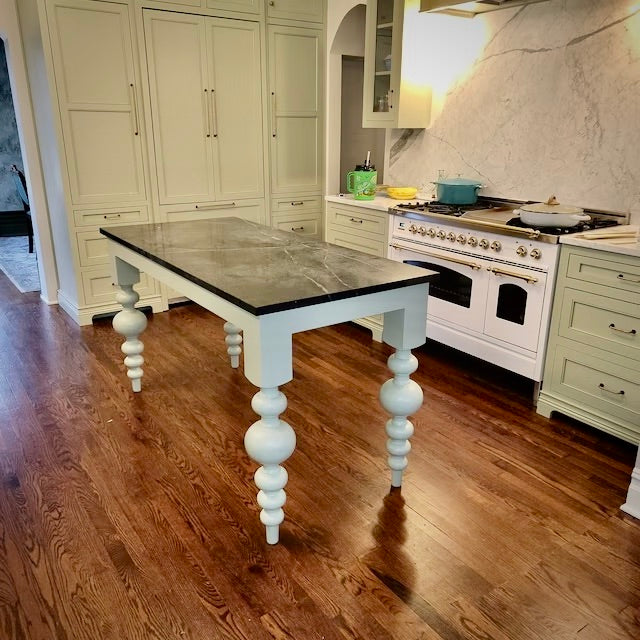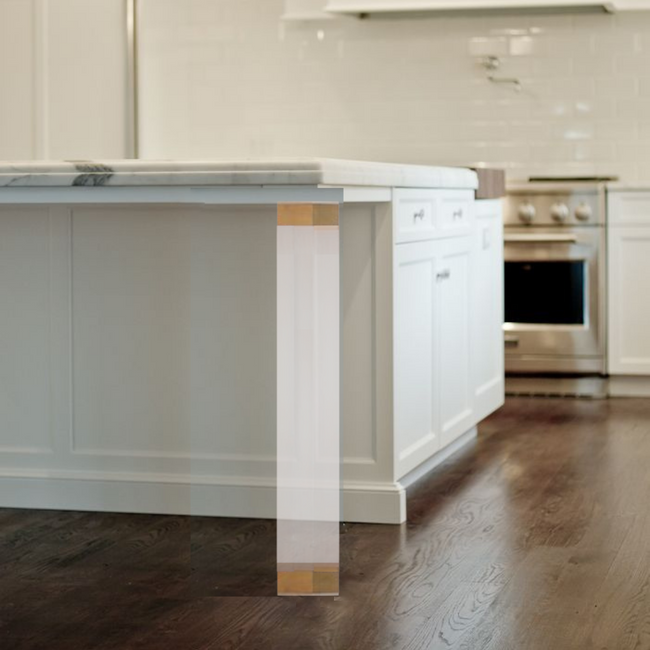A Comprehensive Overview to Choosing the Right Kitchen Island Leg
Wiki Article
The Value of a Sturdy Cooking Area Island Leg in Developing a Functional Cooking Location
A durable kitchen island leg serves as a basic component in establishing a functional food preparation atmosphere, giving needed assistance for both the kitchen counter and various cooking area activities. The security it provides can considerably minimize the risk of crashes in high-traffic locations, while additionally contributing to the total aesthetic coherence of the space. As cooking areas evolve right into multifunctional locations for food preparation, eating, and interacting socially, the selection of products and design considerations for island legs ends up being increasingly crucial. Understanding these aspects can change your kitchen right into a safer and extra efficient location, prompting additional exploration right into the most effective alternatives offered.Advantages of Sturdy Island Legs
Supplying vital assistance, tough kitchen area island legs play a crucial duty in boosting the functionality and longevity of cooking area islands - kitchen island leg. These legs not just bear the weight of the countertop and any kind of extra things positioned on the island, yet additionally add to the overall stability of the framework. A well-supported cooking area island makes sure that it continues to be upright and useful, also under heavy use, which is specifically vital in active cooking area atmospheresAdditionally, tough island legs can enhance the visual allure of the kitchen. They give a solid structure that can enhance various design styles, from contemporary to conventional. This convenience enables homeowners to tailor their kitchen area islands according to individual taste while making certain that the structural honesty continues to be uncompromised.
Along with their encouraging function, durable kitchen island legs can likewise improve safety and security. A stable island reduces the risk of accidents triggered by tipping or wobbling, which is specifically critical in households with youngsters or senior individuals. Additionally, strong legs can facilitate a seamless circulation of tasks, permitting reliable dish preparation and social interactions within the cooking area area. Inevitably, buying tough cooking area island legs is vital for a functional and visually pleasing cooking location.
Materials for Kitchen Island Legs
When picking products for cooking area island legs, sturdiness and aesthetic appeal are crucial factors to take into consideration,. The most common materials consist of wood, steel, and engineered wood, each offering unique benefits.Hardwood, such as cherry, maple, or oak, is a traditional selection due to its toughness and ageless elegance (kitchen island leg). It can withstand considerable weight and is resistant to use, making it excellent for high-use kitchen area environments. Additionally, wood can be discolored or painted to complement numerous kitchen styles
Steel legs, usually crafted from stainless steel or wrought iron, offer a contemporary and industrial appearance. They are unbelievably solid and can support considerable loads while being resistant to dampness and warm, which is useful in a cooking area. Metal legs check these guys out can also be easily cleaned up, boosting their usefulness.

Style Considerations for Security
The option of materials for kitchen island legs straight influences the style considerations for stability. When developing a cooking area island, it is vital to review the weight-bearing capability of the selected materials. Larger materials, such as solid wood or steel, normally offer better stability, especially under the tension of day-to-day usage.Furthermore, the leg style must include proper geometry to enhance security. A wider base enhances the support area, minimizing the threat of wobbling or tipping. Factor to consider needs to likewise be offered to the elevation of the legs; disproportionate leg lengths can cause discrepancy, jeopardizing the overall stability of the island.
Moreover, the distribution of weight across the island is important. Making certain that the leg positioning lines up with the heaviest components, such as devices and counter tops, will certainly better enhance security.
Maintenance Tips for Longevity

Cleaning up is another critical facet of maintenance. Relying on the material of the legs-- whether timber, steel, or composite-- appropriate cleaning methods ought to be utilized. For wood legs, a mild clean with a moist cloth and a suitable timber cleaner will certainly aid protect their finish. check my reference Metal legs might require a light polish to stop corrosion and preserve their luster.
Furthermore, tightening up screws and screws regularly can make sure security and protect against tottering. Consider enhancing the legs with extra brackets or sustains to improve durability if the kitchen area island experiences hefty usage. Lastly, applying a protective finish or sealant can secure versus wetness and spots, prolonging the life expectancy of the legs. By following these upkeep pointers, homeowners can guarantee their kitchen area island legs stay durable and functional for many years to find.
Selecting the Right Leg Style
Routine maintenance guarantees that kitchen island legs continue to be durable and practical, yet choosing the right leg style is equally essential for both aesthetics and assistance. The option of leg style can dramatically affect the general layout and consistency of your cooking area.
Capability is another critical aspect. Thicker legs or those with a sturdy base can sustain larger countertops read this article and equipment, boosting the island's energy. On the other hand, slim legs may develop an airy look, ideal for lighter designs but possibly much less supportive.
Conclusion
In summary, the value of sturdy kitchen island legs can not be overstated in the creation of a practical cooking area. These legs provide vital assistance, boost security, and add to the overall aesthetic of the kitchen.A tough kitchen island leg serves as a fundamental part in establishing a functional food preparation atmosphere, providing needed support for both the counter top and different kitchen area activities.Supplying important assistance, sturdy kitchen area island legs play a critical role in improving the performance and sturdiness of kitchen area islands. Ultimately, spending in tough kitchen island legs is necessary for a useful and visually pleasing cooking area.
Factor to consider must also be given to the height of the legs; disproportionate leg lengths can lead to discrepancy, jeopardizing the overall security of the island.
Wooden legs give heat and a timeless appearance, while metal legs provide a modern-day and industrial feeling.
Report this wiki page